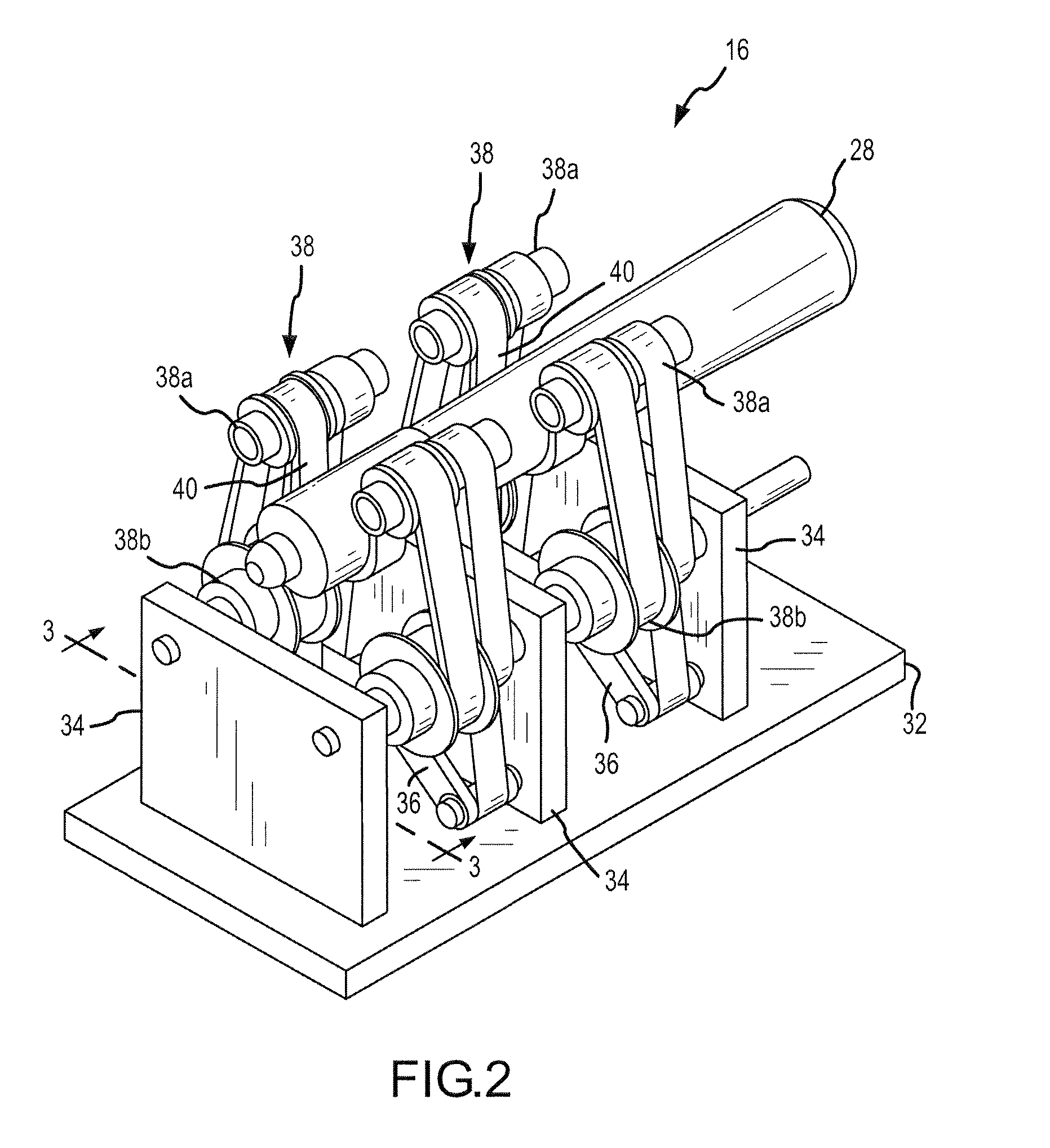Robotically controlled catheter and method of its calibration
a robotic control and catheter technology, applied in the field of robotic control devices, can solve the problems of inability to accurately predict the relative changes desired in the tip position, the inherent error of extant positional feedback systems such as the navigation system described above, and the inability to accurately characterization the catheter open loop
- Summary
- Abstract
- Description
- Claims
- Application Information
AI Technical Summary
Benefits of technology
Problems solved by technology
Method used
Image
Examples
Embodiment Construction
[0030]FIG. 1 schematically illustrates an embodiment of a robotic surgical system 10 for robotic manipulation and control of a medical device 12. Medical device 12 is preferably a catheter, which may be any type of catheter, including, by way of example only and without limitation, an ablation catheter, a guide wire catheter, an introducer catheter, a probe, or a stylet. It should be understood, however, that any other therapeutic, diagnostic, or assistive medical device may be controlled by robotic surgical system 10 without departing from the scope of the present invention. Such other devices include, but are not limited to, syringes, electrophoresis devices, iontophoresis devices, transdermal pharmaceutical delivery devices, myoblast delivery devices, stem cell delivery devices, ablation devices, stents, and pacemaker leads, which may be carried on or delivered by a catheter. It should further be understood that robotic surgical system 10 may be used to manipulate and control mor...
PUM
 Login to View More
Login to View More Abstract
Description
Claims
Application Information
 Login to View More
Login to View More - R&D
- Intellectual Property
- Life Sciences
- Materials
- Tech Scout
- Unparalleled Data Quality
- Higher Quality Content
- 60% Fewer Hallucinations
Browse by: Latest US Patents, China's latest patents, Technical Efficacy Thesaurus, Application Domain, Technology Topic, Popular Technical Reports.
© 2025 PatSnap. All rights reserved.Legal|Privacy policy|Modern Slavery Act Transparency Statement|Sitemap|About US| Contact US: help@patsnap.com



